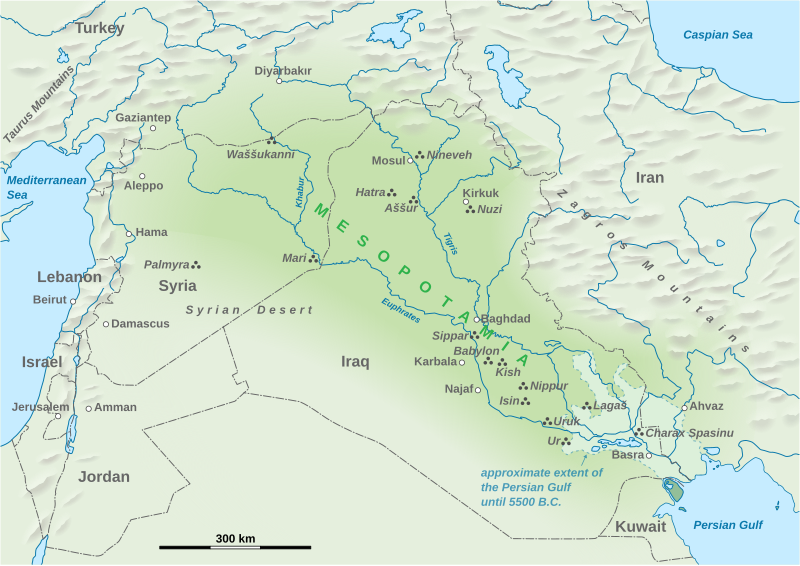Are you asking or arguing?
Chaldees = kaśdı̂y kaśdı̂ymâh (Occasionally shown as the second form with enclitic; meaning towards the Kasdites); patronymic from H3777 (only in the plural); a Kasdite, or descendant of Kesed; by implication a Chaldaean (as if so descended); also an astrologer (as if proverbial of that people): - into Chaldea, patronymicallyn. from H3777 (only in the plural); a Kasdite; or descendant of Kesed; by implication a Chaldan (as if so descended); also an astrologer (as if proverbial of that people):
Not only is there much debate in interpreting Ur Kaśdim as Abraham's birthplace, but also identifying this location.
n 1927 Leonard Woolley identified Ur Kaśdim with the Sumerian city of Ur, in southern Mesopotamia, where the Chaldeans had settled around the 9th century BCE;[1] Ur lay on the boundary of the region called Kaldu (Chaldea, corresponding to Hebrew Kaśdim) in the first millennium BCE. It was the sacred city of the moon god and the name "Camarina" is thought to be related to the Arabic word for moon qamar. The identification with Ur Kaśdim accords with the view that Abraham's ancestors may have been moon-worshippers, an idea based on the possibility that the name of Abraham's father Terah is related to the Hebrew root for moon (y-r-h). - http://en.wikipedia.org/wiki/Ur_of_the_Chaldees
Abraham was from the city of Ur according to Genesis 11:31. The problem is that there are several places called Ur. It is identified as "Ur of the Chaldeans." The problem with "Chaldeans" is that it is a late word used in the Neo-Babylonian times...
There is no debate over where Haran is located, 10 miles north of the Syrian border in Turkey along the Balikh River, a tributary of the Euphrates River. Haran is an important Hurrian center, mentioned in the Nuzi tablets. The moon god, Sin was worshiped here. If Ur were located in Southern Iraq, why would Abraham travel 60 miles way out of his way to go to Haran?
There are two cities not far from Haran; Ura and Urfa. Local tradition says that Abraham was born in Urfa. Northern Ur is mentioned in tablets at Ugarit, Nuzi, and Ebla, which refers to Ur, URA, and Urau (See BAR January 2000, page 16).
The names of several of Abraham's relatives like Peleg, Serug, Nahor and Terah, appear as names of cities in the region of Haran (Harper's Bible Dictionary, page 373). Abraham sent his servant back to the region of Haran to find a wife for Isaac (Genesis 24:10).
After working for Laban, Jacob fled across the Euphrates River back to Canaan (Genesis 31:21). If Ur were in Southern Mesopotamia, then Jacob would not need to cross the Euphrates. Laban is said to live in Paddan-Aram, which is in the region of Haran (Genesis 28:5-7), which seems to be the same area as Aram-Naharaim, Abraham's homeland (Genesis 24:10).
All this evidence taken together seems to indicate that the Ur of Abraham was in the same region as Haran in Northern Mesopotamia, and not the famous Ur in Southern Mesopotamia. - https://www.bibleandscience.com/bible/books/genesis/ur.htm
Josephus and Rabbi Maimonides believed that Ur Kasdim was in Northern Mesopotamia, in what is today Syria or Turkey.
There is no debate over where Haran is located, 10 miles north of the Syrian border in Turkey along the Balikh River, a tributary of the Euphrates River. Haran is an important Hurrian center, mentioned in the Nuzi tablets. The moon god, Sin was worshiped here.
There are two cities not far from Haran; Ura and Urfa. Local tradition says that Abraham was born in Urfa. Northern Ur is mentioned in tablets at Ugarit, Nuzi, and Ebla, which refers to Ur, URA, and Urau (See BAR January 2000, page 16).
The names of several of Abraham's relatives like Peleg, Serug, Nahor and Terah, appear as names of cities in the region of Haran (Harper's Bible Dictionary, page 373). Abraham sent his servant back to the region of Haran to find a wife for Isaac (Genesis 24:10).
Gen 24:4 You must go back to the country where I was born (nativity) and get a wife for my son Isaac from among my relatives."
Gen 24:10 The servant, who was in charge of Abraham's property, took ten of his master's camels and went to the city where Nahor had lived in northern Mesopotamia (Aram Naharaim) . (GNB)
More: http://www.accuracyingenesis.com/ur.html
Unlike the Akkadian speaking Assyrians and Babylonians, the Chaldeans were certainly not a native Mesopotamian people, but were migrants to the region. They seem to have appeared there c. 1000 BC, not long after other new Semitic peoples, the Arameans and the Sutu appeared in Babylonia, c. 1100 BC. This was a period of weakness in Babylonia, and its ineffectual native kings were unable to prevent new waves of foreign peoples invading and settling in the land.[4]
Though belonging to the same West Semitic ethnic group, they are to be differentiated from the Arameans; and the Assyrian king Sennacherib, for example, is careful in his inscriptions to distinguish them.
When they came to possess the whole of southern Mesopotamia, the name "Chaldean" became synonymous with "Babylonian" for a short time, particularly to the Greeks and Jews, despite the Chaldeans not being Babylonians.
the traditional identification with a site in Assyria [Centered on the Upper Tigris river, in northern Mesopotamia(Iraq)], would then imply the later sense of "Babylonia", and a few interpreters have additionally tried to identify Abraham's birthplace with Chaldia [[ northeast Anatolia (modern Turkey)], a distinct region in Asia Minor on the Black Sea. According to the Book of Jubilees, Ur Kaśdim (and Chaldea) took their name from Ura and Kesed, descendants of Arpachshad. Though conquerors, the Chaldeans were rapidly and completely assimilated into the dominant Semitic Akkadian Babylonian culture, as the Amorites, Kassites and Arameans before them had been, and after the fall of Babylon in 539 BC the term "Chaldean" was no longer used to describe a specific ethnicity, but rather a socio-economic class. - http://en.wikipedia.org/wiki/Chaldea
